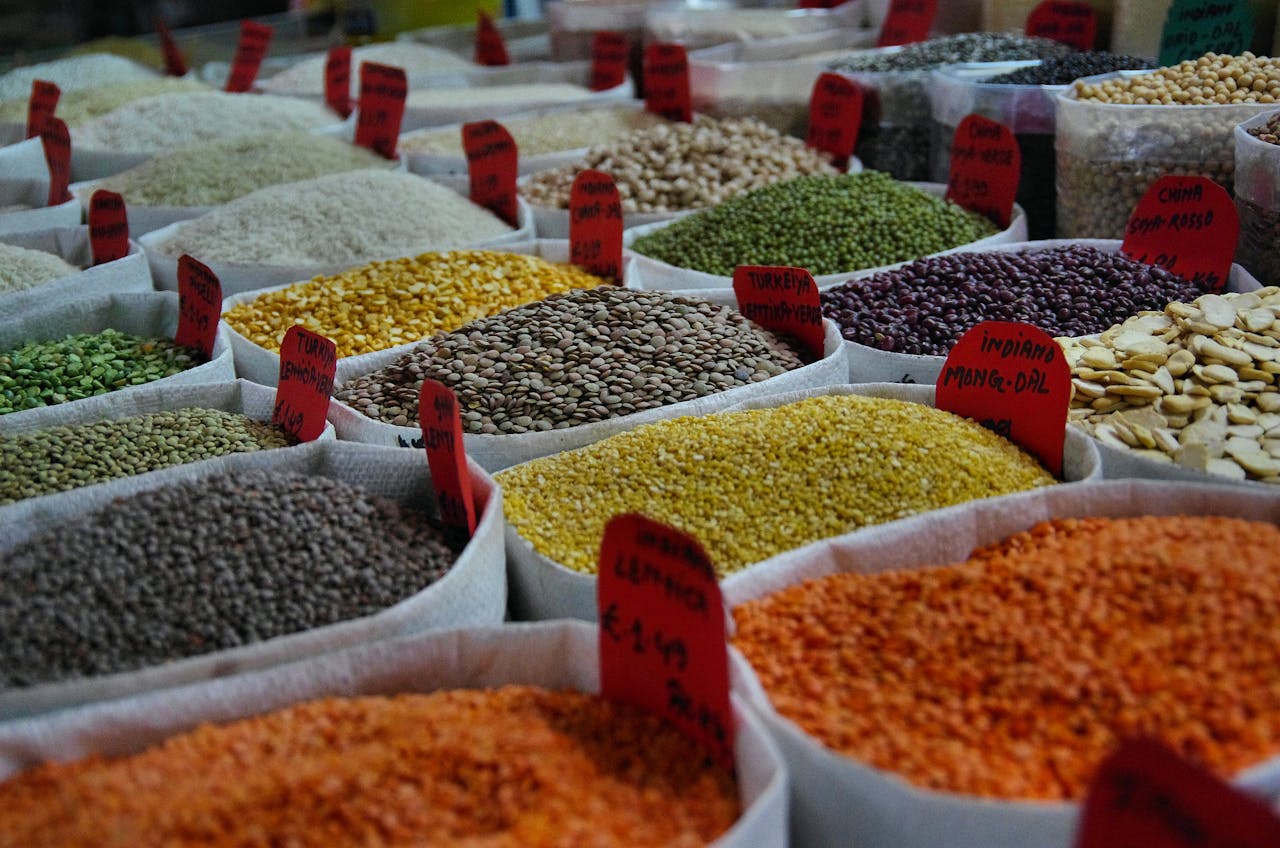Let's talk about grains
Grain recipes
What is a grain?

Seeds of grasses grown for food are called grains. Commonly eaten grains include wheat, oats and rice. Each grain is made of three parts:
- Bran: The bran is the hard outer coating of a grain containing most of the grain's fiber. It also contains vitamins and minerals.
- Germ: The germ is the part that sprouts into a new plant. It contains many vitamins, healthy fats and other natural nutrients for the plant.
- Endosperm: The endosperm provides the energy supply for the seed. It mostly contains starches, as well as small amounts of proteins and vitamins. The endosperm has very little fiber.
Nutrition in wholegrains
The bran from any kind of wholegrain is a rich source of fiber. Nutrients in wholegrains vary and may include the following nutrients:
- Vitamin A
- Vitamin Bs (thiamin, riboflavin, niacin, pyridoxine and folate)
- Vitamin E
- Iron
- Magnesium
- Phosphorus
- Selenium
Types of grains
Wholegrains: Wholegrains have all parts of the grain intact. Examples of wholegrain food include brown rice, oatmeal and wholegrain breads.
Refined grains: Refined grains have the germ and bran layers removed. These grains have a finer texture and a longer food storage life. However, removal of germ and bran strips away nearly all of the fiber and many other nutrients from the grain. Food with refined grains include white rice and most white breads, pastries, cakes, and crackers.
Enriched grains: The nutrients removed from refined grains may be added back. These refined grains are called enriched grains. For example, when rice is refined, it loses vitamins, minerals and fiber. Enriched white rice has these vitamins and minerals added back. However, fiber usually isn't replaced in enriched grains.
Fortified grains: Foods also may have nutrients added in the manufacturing process, to improve the nutrient profile of the food. Foods with these extra nutrients are called fortified foods. For example, many breads and breakfast cereals are fortified with folic acid and iron.
What's so good about wholegrains?
The vitamins and minerals in wholegrains are important for your overall health. In particular, the high fiber content of wholegrains may help with:
- Lowering bad cholesterol levels (i.e. LDL cholesterol)
- Raising good cholesterol levels. (i.e. HDL cholesterol)
- Lowering insulin levels
- Lowering blood pressure
- Enhancing meal satiety
In addition, studies show that high-fiber diets can lower the risk of:
- Heart and blood vessel diseases
- Stroke
- Type 2 diabetes
- Colorectal cancer
How to include more grains in your diet
Aim to choose wholegrains whenever possible, or aim for at least half the grains in your diet to be wholegrains.
You can find wholegrain versions of rice, bread, cereal, flour and pasta at most grocery stores. Examples of whole grains and wholegrain foods include:
- Barley
- Bulgur, also called cracked wheat
- Farro
- Millet
- Quinoa
- Black rice
- Brown rice
- Red rice
- Wild rice
- Oatmeal
- Popcorn
- Whole-wheat flour
- Wholegrain breakfast cereals
- Wholewheat bread, pasta or crackers